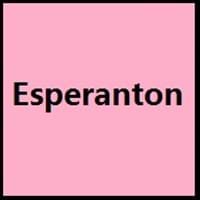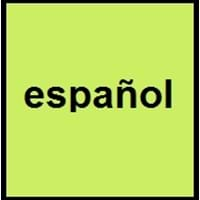Countries
East Asia, European Union, South America
Andora, Argentina, Aruba, Australia, Belize, Bolivia, Brazil, Canada, Chile, Colombia, Costa Rica, Cuba, Dominican Republic, Ecuador, El Salvador, Equatorial Guinea, France, Gibraltar, Guatemala, Honduras, Jamaica, Latvia, Luxembourg, Mexico, Morocco, Namibia, Netherlands Antilles, New Zealand, Nicaragua, Norway, Panama, Paraguay, Peru, Philippines, Puerto Rico, Russia, Spain, Sweden, Switzerland, Trinidad and Tobago, Turkey, United Kingdom, United States of America, Uruguay, Venezuela, Western Sahara
National Language
East Asia, European Union
Spain
Second Language
Central Europe, East Asia, Eastern Europe, South America
Andora, Aruba, Australia, Austria, Belgium, Belize, Brazil, Bulgaria, Canada, Denmark, France, Germany, Ireland, Israel, Italy, Jamaica, Luxembourg, Morocco, Netherlands, Netherlands Antilles, New Zealand, Philippines, Poland, Portugal, Romania, Russia, Slovenia, Switzerland, Trinidad and Tobago, Turkey, United Kingdom, United States of America, US Virgin Islands
Speaking Continents
Asia, Europe, South America
Africa, Asia, Europe, North America, South America
Minority Language
Not spoken in any of the countries
Brazil, France, Germany, Italy, Japan, Morocco, United Kingdom
Regulated By
Akademio de Esperanto
Asociación de Academias de la Lengua Española
Interesting Facts
- The most widely spoken constructed language in the world is Esperanto.
- Esperanto is an artificial international language.
- One of the world's most phonetic language is Spanish.
- Up to the 18th century, Spanish was diplomatic language.
Similar To
Not Available
French Language
Derived From
Not Available
Latin
Alphabets in
Esperanto-Alphabets.jpg#200
Spanish-Alphabets.jpg#200
Writing Direction
Not Available
Left-To-Right, Horizontal
How Are You?
Kiel vi sanas?
Cómo estás?
Good Night
Bonan nokton
Buenas Noches
Good Evening
Bonan vesperon
Bonne soirée
Good Afternoon
Bonan posttagmezon
Buenas Tardes
Good Morning
Bonan matenon
Buenos Días
Please
Mi petas
Por Favor
Sorry
Mi bedaŭras!
triste
I Love You
Mi amas vin
Te Quiero
Excuse Me
Pardonu!
Discúlpeme
Dialect 1
Not present
Mexican Spanish
Where They Speak
Not present
Mexico
How Many People Speak
Not Available
Dialect 2
Not present
Cuban Spanish
Where They Speak
Not present
Cuba
How Many People Speak
Not Available
Dialect 3
Not present
Puerto Rican Spanish
Where They Speak
Not present
Puerto Rico
How Many People Speak
Not Available
Speaking Population
Not Available
Native Name
Esperanto
Español
Alternative Names
Eo, La Lingvo Internacia
Castellano, Castilian, Español
French Name
espéranto
espagnol; castillan
German Name
Esperanto
Spanisch
Pronunciation
[espeˈranto]
[espaˈɲol], [kasteˈʎano]
Ethnicity
Not Available
Not Available
Language Family
Indo-European Family
Indo-European Family
Subgroup
Not Available
Romance
Branch
Not Available
Not Available
Early Forms
Proto-Esperanto
Old Spanish and Spanish
Standard Forms
Esperanto
Pluricentric Standard Spanish
Language Position
Not Available
Signed Forms
Signuno
Signed Spanish
Scope
Individual
Individual
ISO 639 6
Not Available
Not Available
Glottocode
espe1235
stan1288
Linguasphere
51-AAB-da
51-AAA-b
Language Type
Constructed
Living
Language Linguistic Typology
Not Available
Subject-Object-Verb
Language Morphological Typology
Agglutinative
Fusional, Synthetic
Esperanto and Spanish Greetings
People around the world use different languages to interact with each other. Even if we cannot communicate fluently in any language, it will always be beneficial to know about some of the common greetings or phrases from that language. This is where Esperanto and Spanish greetings helps you to understand basic phrases in Esperanto and Spanish language. Esperanto word for "Hello" is Halo or Spanish word for "Thank You" is Gracias. Find more of such common Esperanto Greetings and Spanish Greetings. These greetings will help you to be more confident when conversing with natives that speak these languages.
Esperanto vs Spanish Difficulty
The Esperanto vs Spanish difficulty level basically depends on the number of Esperanto Alphabets and Spanish Alphabets. Also the number of vowels and consonants in the language plays an important role in deciding the difficulty level of that language. The important points to be considered when we compare Esperanto and Spanish are the origin, speaking countries, language family, different greetings, speaking population of these languages. Want to know in Esperanto and Spanish, which language is harder to learn? Time required to learn Esperanto is 6 weeks while to learn Spanish time required is 24 weeks.





